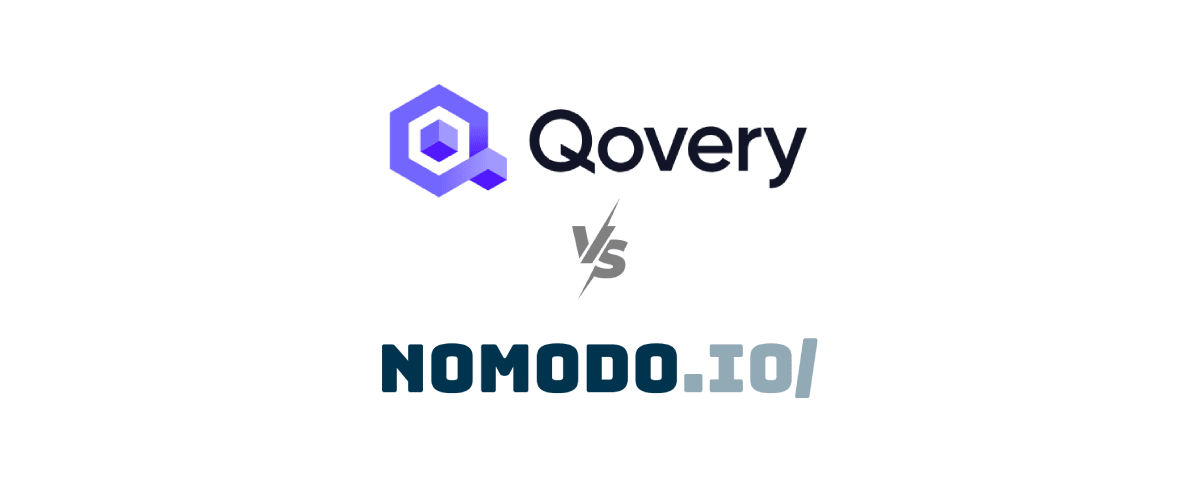Qovery vs. Nomodo
Explore the differences between Qovery’s DevOps automation platform and Nomodo’s open‑source apps as a service to find the best fit for your team’s needs and expertise.

Overview
Qovery
Qovery is a DevOps automation platform designed for teams with strong Kubernetes and AWS expertise. It simplifies the deployment of containerized applications to AWS Kubernetes clusters, requiring significant knowledge of container registries and Kubernetes ecosystems. Qovery is primarily a tool for DevOps teams to streamline their workflows and manage complex infrastructure more efficiently.Nomodo
Nomodo is a developer-centric PaaS that offers open‑source applications as a service. Developers can run applications in cloud without needing to understand infrastructure, containerisation, or scaling. Nomodo offers pre-configured open‑source apps like Medusa, Grav, PostgreSQL and more. Deployment is easy—developers can focus on their projects while Nomodo automatically handles setup, scaling, and maintenance.Comparison of Features
| Feature | Qovery | Nomodo |
|---|---|---|
| Type of Service | DevOps Automation Platform | Open‑source apps as a service |
| Target Audience | DevOps teams, infrastructure specialists | Developers, open‑source enthusiasts, and teams |
| Required Expertise | Strong knowledge of Kubernetes, AWS, and containerization | No DevOps knowledge needed |
| Infrastructure Control | Fine-grained control over infrastructure | Fully managed infrastructure |
| Deployment Process | Deploy containerized applications to AWS Kubernetes clusters | One-click deployment of pre-configured open‑source apps |
| Scaling | Manual configuration with Kubernetes | Fully automatic, no configuration needed |
| Add-ons & Ecosystem | Integration with existing DevOps tools | Essential plugins provided pre-installed and configured |
| Learning Curve | Steep, requires significant DevOps knowledge | Minimal, designed for ease of use |
Challenges with Qovery vs.
Solutions with Nomodo
Challenges developers face | How Nomodo Solves it |
|---|---|
Complex Setup and Configuration Qovery requires setting up Kubernetes clusters and AWS resources, which can be challenging for developers without extensive DevOps experience. | One-Click Deployments Nomodo allows you to deploy applications in seconds with a single click—no technical knowledge required, saving you hours every month. |
High Learning Curve Using Qovery effectively requires in-depth knowledge of Kubernetes, containerization, and AWS services. | Managed Infrastructure Nomodo handles server setup and maintenance, letting you focus on building features rather than maintaining infrastructure. |
Resource-Intensive Management While Qovery automates some processes, it still requires significant involvement in infrastructure management. | Automated DevOps Nomodo automates monitoring, scaling, updates, and backups, allowing developers to work without worrying about DevOps. |
Limited Accessibility for Small Teams The complexity and required expertise make Qovery less suitable for small teams or individual developers. | Multi-Cloud Freedom With Nomodo, users have flexibility and are not tied to one cloud provider, ensuring freedom of choice and avoiding vendor lock-in. |
Depoy and Launch in a minute
Real-time video how to run Medusa JS.
What developers are saying?
Overall i liked this stuff. As I said everything was right there. Very simplified and to the point.
Sam-K aka bit_sync_blues
Yes i did try Railway, but it was buggy for me. Nomodo its eazier.
PREDATOR aka predator_dev